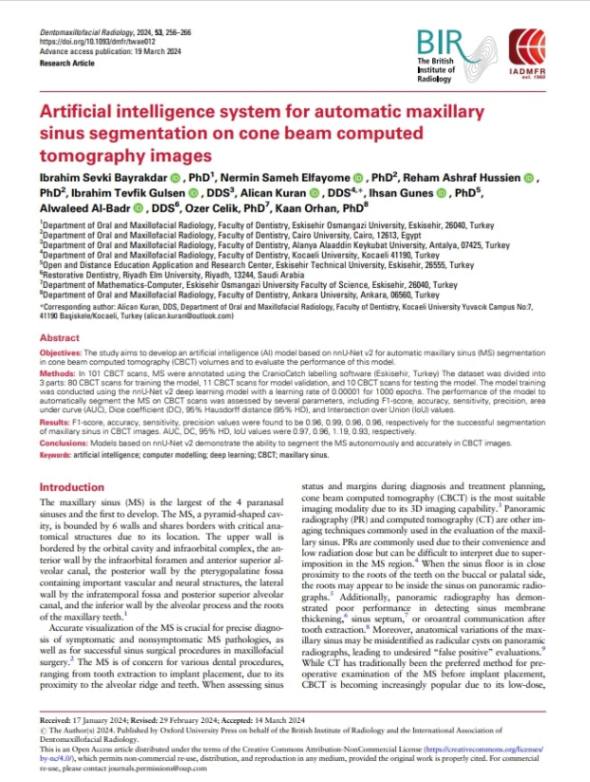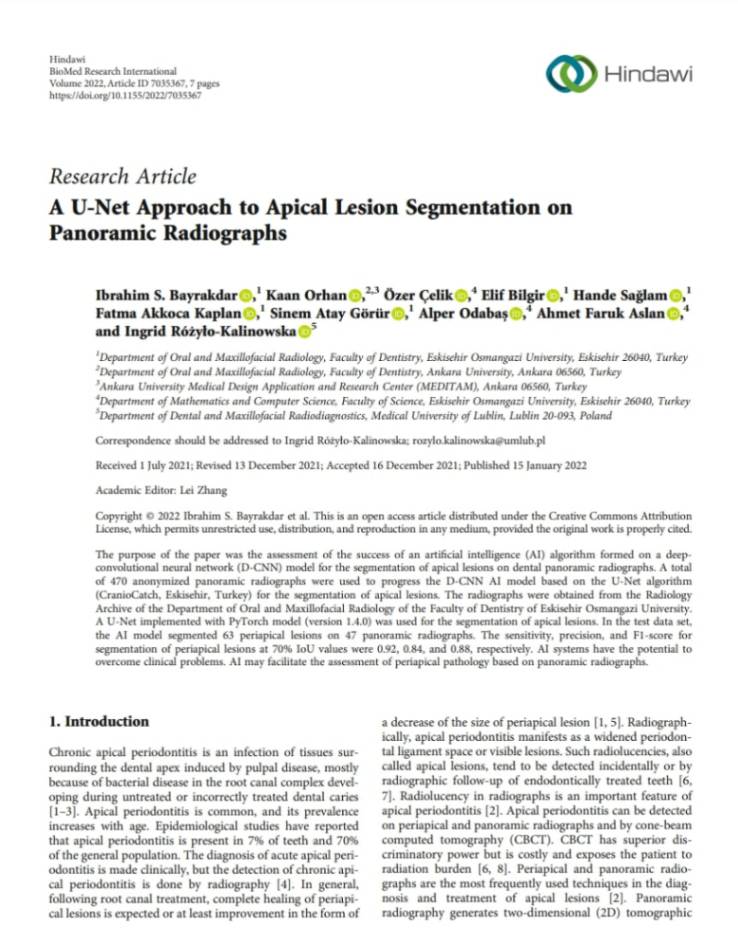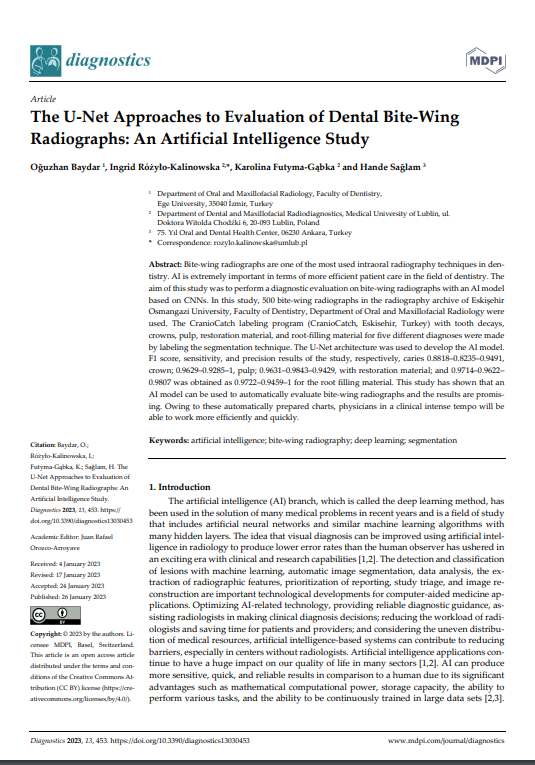Deep-learning approach for caries detection and segmentation on dental bitewing radiographs
Abstract
The study aims to develop and evaluate an automatic caries detection and segmentation model using Convolutional Neural Networks (CNN) on dental bitewing radiographs, specifically utilizing VGG-16 and U-Net architectures. The performance of the AI model is compared to human observers.
Objectives
- To propose an automatic caries detection and segmentation model based on CNN algorithms.
- To evaluate the clinical performance of the model compared to human observers.
Methods
- Data Collection: 621 anonymized bitewing radiographs were obtained from Ordu University's Radiology Archive.
- Algorithms: VGG-16 and U-Net architectures implemented with PyTorch were used for detection and segmentation, respectively.
- Ground Truth: Annotations were provided by an oral and maxillofacial radiology expert and a specialist in restorative dentistry.
- Model Training: The dataset was split into training, validation, and test groups. Various pre-processing steps and data augmentation techniques were applied.
- Performance Metrics: Sensitivity, precision, and F1-score were used to assess model performance.
Results
- Detection Model Performance:
- Sensitivity: 0.84
- Precision: 0.84
- F1-Score: 0.84
- Segmentation Model Performance:
- Sensitivity: 0.81
- Precision: 0.86
- F1-Score: 0.84
- Comparison with Human Observers:
- The AI models showed superior performance compared to assistant specialists on external radiographic datasets.
Conclusion
CNN-based AI algorithms have the potential to accurately and effectively detect and segment dental caries in bitewing radiographs. These AI models can serve as clinical decision support systems, aiding clinicians in routine practice.
I Want to Write a Scientific Research Project
CranioCatch is a global leader in dental medical technology that improves oral care in the field of dentistry. With AI-supported clinical, educational, and labeling solutions, we provide significant improvements in the diagnosis and treatment of dental diseases using contemporary approaches in advanced machine learning technology.
CranioCatch serves thousands of patients with dental health issues worldwide every day with its innovative technologies. That’s why we eagerly look forward to meeting our valued dentists who wish to work in the field of 'Scientific Research in Dentistry'.



 Contact Us
Contact Us

